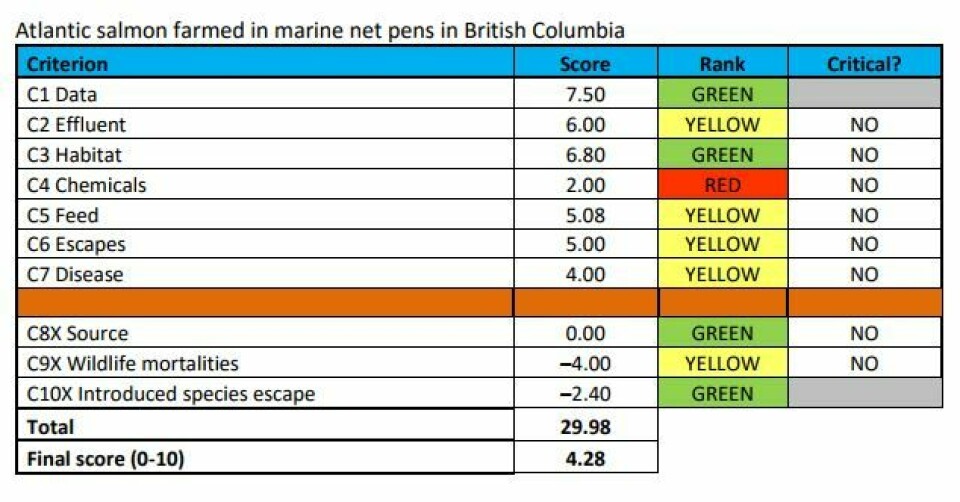
British Columbia salmon earns an upgrade
The Monterey Bay Aquarium Seafood Watch program now recommends Atlantic salmon raised in British Columbia, Canada as a “good alternative”.
Seafood Watch has indicated that the improved rating is due to an increase in independent, transparent, peer reviewed data on the subject of disease transfer between farmed Atlantic salmon and wild salmon populations in British Columbia. There were also improvements to the effluent, habitat, escapes and introduced species criteria.

“BC’s farming practices have been singled out by Seafood Watch as world leading. This is an important acknowledgement of the work salmon farmers in BC have done to increase their environmental performance and increase the transparency of their operations,” said Jeremy Dunn, BC Salmon Farmers Association executive director.
“There remains work to be done, and our members are committed to leading the world in environmental practices, evidenced by their record in achieving the standards of audited third-party certifications.”
The Seafood Watch Report highlighted the initial results from the Pacific Salmon Foundation’s Strategic Salmon Health Initiative and other research noting that, while although a level of concern is warranted, there is currently no evidence that there is any impact from salmon farms to wild salmon.
More than 20 independent experts provided an exhaustive review of the report, which can be found here.




















































